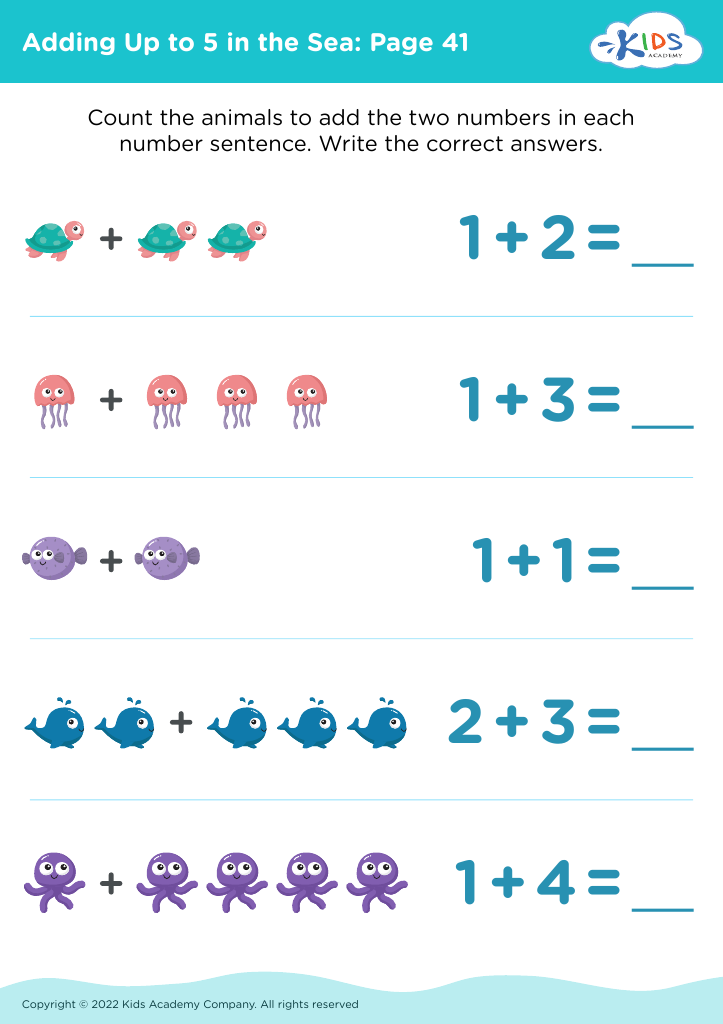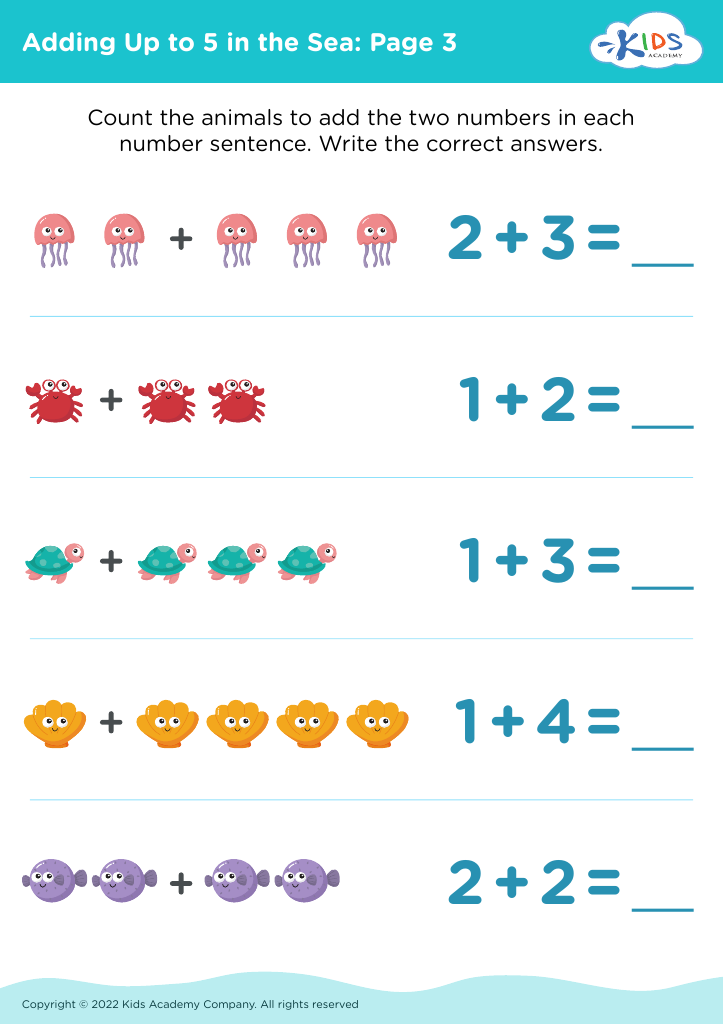Underwater animal identification Math Worksheets for Ages 4-5
3 filtered results
-
From - To
Explore our engaging Underwater Animal Identification Math Worksheets designed for ages 4-5! These printable activities help children enhance their math skills while learning about fascinating ocean creatures. Each worksheet includes fun, vibrant illustrations of various underwater animals, alongside simple math problems tailored to young learners. By identifying and counting these creatures, kids develop essential numeracy skills and boost their confidence. Ideal for parents and educators, our worksheets integrate play and learning, making math enjoyable! Dive into this ocean-themed educational adventure and watch your child's love for math and marine life flourish. Perfect for homeschooling or classroom use!
Underwater animal identification math for children aged 4-5 is crucial for several reasons. Firstly, it integrates basic math skills with engaging, real-world contexts. As young learners identify various underwater animals—like fish, crabs, and starfish—they practice counting, sorting, and categorizing, which are foundational math skills that support cognitive development.
Secondly, this activity fosters curiosity about marine biology and ecosystems, introducing children to biodiversity and environmental awareness at an early age. By learning about underwater animals, they develop not just scientific knowledge but also a sense of respect and responsibility toward the ocean and its inhabitants.
Additionally, underwater animal identification encourages observational skills and critical thinking. As children categorize animals by shape, color, or size, they enhance their ability to notice details and make connections, key skills in both math and science.
Moreover, engaging in such multidisciplinary learning experiences can deepen the bond between parents and children or strengthen teacher-student rapport, making learning more enjoyable and collaborative. Ultimately, encouraging an interest in underwater animal identification math equips children with the confidence and skills they need as they progress in their education, laying the foundation for future academic and environmental stewardship success.
























